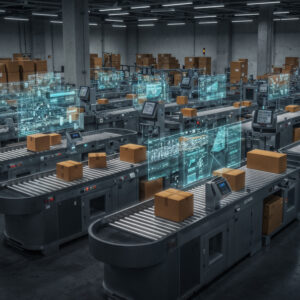Advancing Digital Technology in Supply Chain: The Equation of Increasing Profitability.
The customer just placed the online order and received a delivery confirmation. Within the next 24 hours, the product will reach the door. Everyone wants the fastest speed. Today, we need to look at the advances in digital supply chains. Both in B2C and in B2B, want unique experiences that are delivered on-demand and at the fastest speed. The greatest concern for the supplier is managing all the information at competitive prices while staying cost effective. This means that data that arrives from many different sources such as warehouses, transportation, and distributors must be perfectly synchronized within this time frame. Quality of the data is crucial, still a significant technological barrier that many companies are working on. A recent study suggests that digital supply chains can lower procurement costs (Gartner), reduce supply chain process costs (BCG), impact on revenue and EBIT growth (McKinsey & Company)
First Begins with Augmented Reality: Now to Warehouse.
Not so long ago, it is a little ironic as it was the entertainment industry that first brought AR to popular attention. Terminator Movie is one of them, a robot viewed our world through a screen that supplied digital overlays of information. It took technology development for another 30 years for smart-glass with AR displays to reality. In early 2013, Google Glass, one of the top developers, was named “best invention of the year” by Time Magazine. Despite all the criticisms, Google Glass did not lift up to its expectations to the consumer’s new wearable device’s experience. The expensive price and privacy concerns were raised. Later on, in recent years, Google Glass made an interesting stir to the world of supply chain management, this also includes Samsung, Epson and etc.
Question: what the smart-glass has to do with warehouse and DC operation? As always, to improve efficiency in the logistics operations, companies are increasingly experimenting with smart-glass in the warehouse applications. These wearable digital eyeglasses collect data through a wireless network, then project text and numbers onto a tiny screen incorporated into the glasses. From a user’s perspective, the display looks like full-sized text, overlaid on top of the actual human eye’s vision, or “real world” scene the wearer is viewing at the time. The idea is to give workers hands-free access to computer-generated info, eliminating the need to carry handheld scanners, RF devices or any paper with them, thus creating an uninterrupted process, which is equal to boosting productivity workflow. For large mixed case pallet building warehouses, currently driven by a combination of Voice and smart AGVs technologies. Several big DCs are moving into this combination of a set of technology, especially in the western markets where the cost of maintaining personal is high in order to be competitive, meanwhile some companies are currently conducting tests with beta users to see if replacing the Voice solution, which is the most advanced technology available today, for such vision picking through smart-glass will overtaking the Voice technology or other platforms without compromising the performance.
There are critics said smart-glasses and may degrade reality rather than augment it, and only that propose for entertainment. But augmented reality glasses do seem to serve a clear business purpose in the warehouse. Augmented reality glasses may exceed the performance of Voice in a couple of scenarios. First, if products require extra scans to capture lot or serial codes, capturing those codes with the vision system may be faster. Second, pallet building optimization would probably work far better with augmented reality glasses than other types of solutions.
We don’t yet know if augmented reality glasses will outperform voice recognition. But the first outlook of this technology looks really cool. We always like a fashionable or cool gadget. Smart-glass may promise a futuristic method of filtering the world through a computer screen, advancing warehouse productivity and seemingly promise to delivery cost reduction, only the real scale of deployment will prove for itself. For warehouse technology, this might not be too far into the future.

Several Successful Pilots. But Is It Ready for Prime Time?
Is smart-glass a Game Changer for Warehouse Application? As of 2019 No doubt, the barrier to adaptation is money, lack of a clear business case to justify the cost, adaptation to business practices, lack of utilization into other information effectively (CRM, ERP, WMS and so on). This will leave the question for the adaptation to such technology if it can offer an end-to-end and comprehensive solution. Smart-glass technology might be in limited use today, but that may soon change. Smart-glass and AR technology are advancing quickly, and logistics will probably be one of the first industries to reap the benefits.
Brief to Take Home:
– This technology brings Hands-Free Device with Instant Access to Data
– Also, Improving Productivity and Performance
– However, consider of Infrastructure Readiness, Business Process & Workflow before migration to a new platform
Finally, Justification to Business Model





